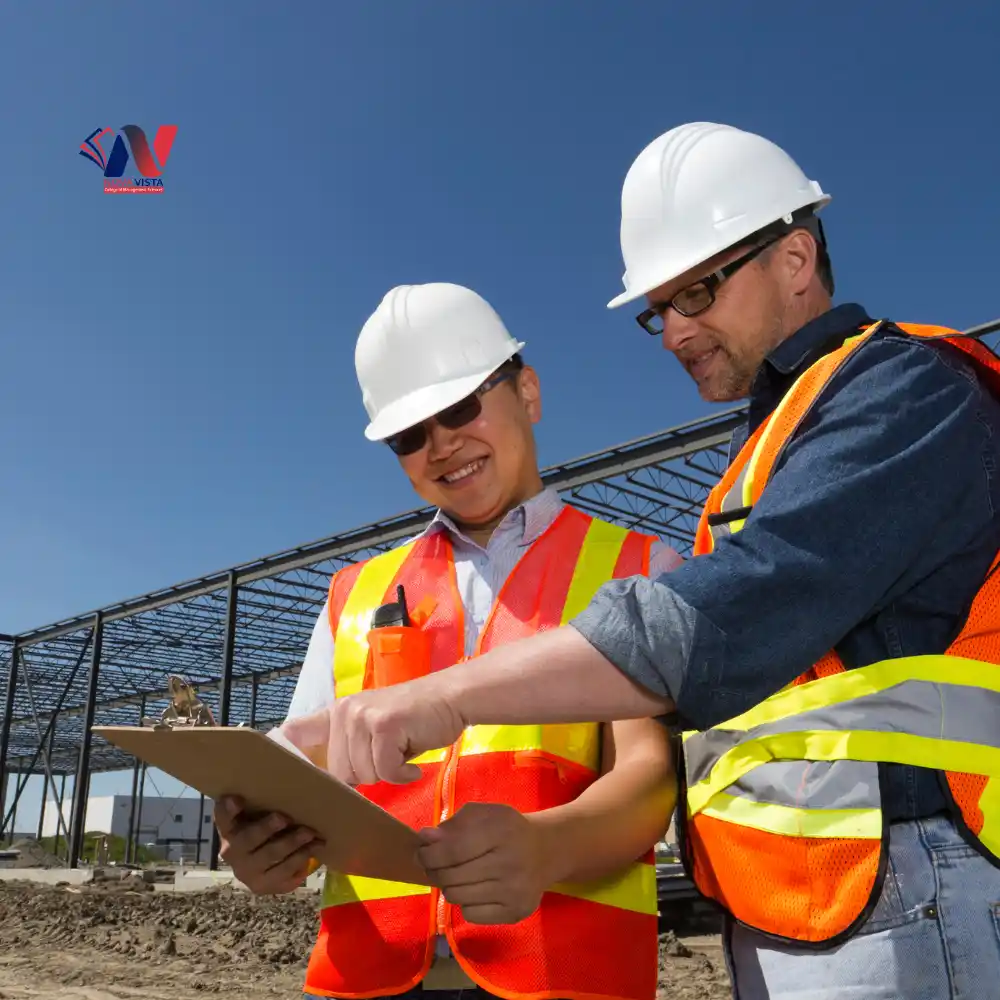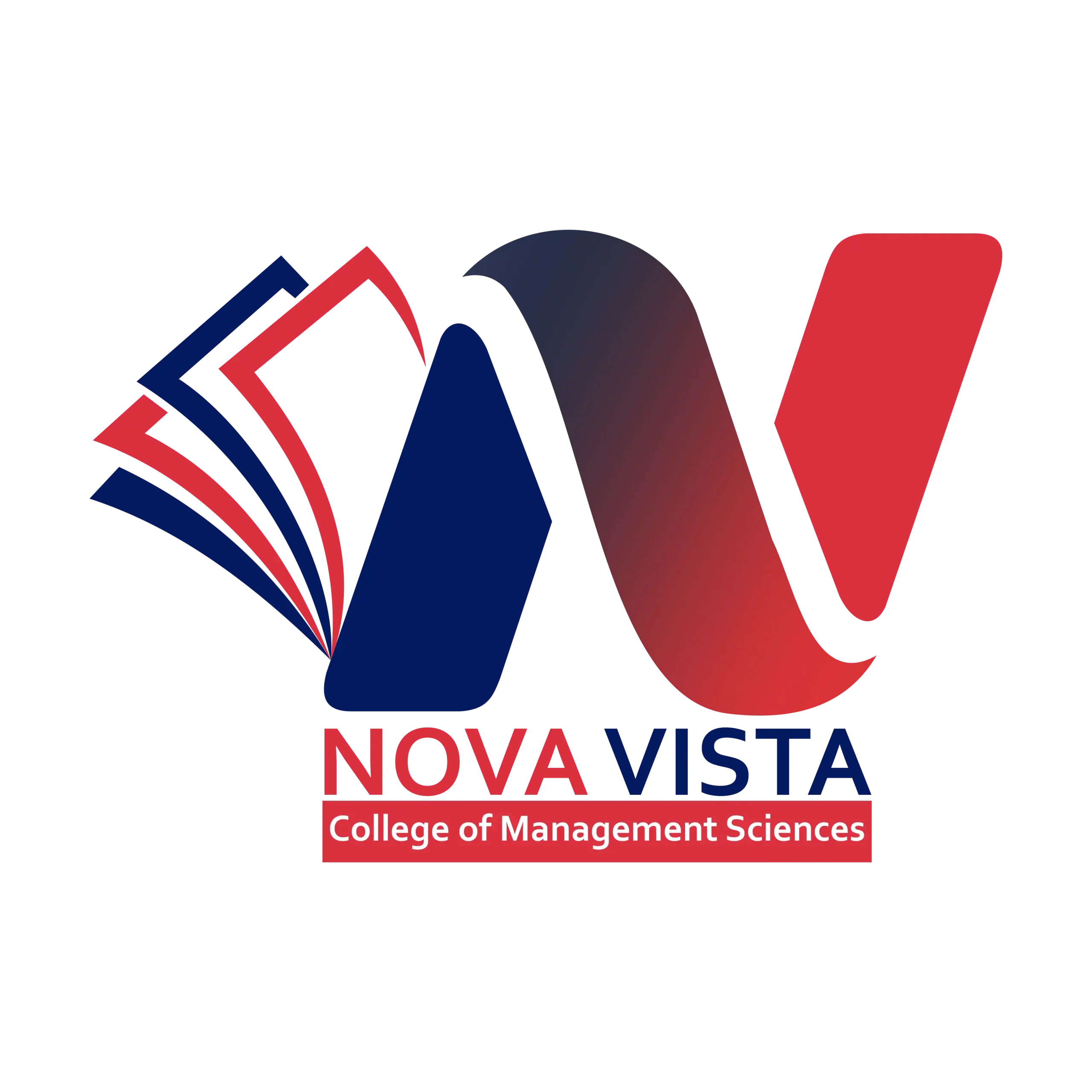The ICTQual AB Diploma in Occupational Health and Safety Engineering 360 Credits – Three Years is a comprehensive and internationally recognized qualification designed for individuals who want to build strong expertise in health, safety, and engineering practices. This three-year diploma provides learners with advanced knowledge of occupational health standards, workplace safety systems, and engineering-based risk management, making it one of the most sought-after programs for aspiring safety engineers and professionals worldwide.
Throughout the program, learners will gain a deep understanding of Occupational Health and Safety Engineering Diploma principles, including hazard identification, industrial safety design, accident prevention, and regulatory compliance. The course also emphasizes the practical application of safety strategies in diverse industries such as construction, oil and gas, manufacturing, and engineering projects. By combining technical learning with real-world case studies, the diploma ensures graduates are workplace-ready and capable of managing complex safety challenges.
One of the key benefits of this qualification is its global recognition, making it suitable for learners seeking international career opportunities. With 360 credits spread over three years, the program balances theoretical foundations with applied engineering safety practices. Graduates will not only develop technical expertise but also critical leadership, problem-solving, and decision-making skills highly valued by employers.
Whether you are a student planning to enter the safety engineering field or a working professional aiming to advance your career, the ICTQual AB Diploma in Occupational Health and Safety Engineering Three Years equips you with the right knowledge, skills, and credibility to excel in high-demand safety roles globally.
Awarding Body
ICTQual AB
Study Mode
Online
Completion Time
3-Years
Study Units
36 Mandatory Units
Assessments
Assignments & Evidences Based
| Qualification Title | ICTQual AB Diploma in Occupational Health and Safety Engineering 360 Credits- Three Years |
| Total Credits | 360 |
| Assessment | Pass or fail Internally assessed and verified by centre staff External quality assurance by ICTQual AB verifiers |
To enrol in the ICTQual AB Diploma in Occupational Health and Safety Engineering 360 Credits- Three Years ,applicants must meet the following entry criteria:
Minimum Age
- Applicants must be 18 years of age or older at the time of registration.
Educational Background
- A high school diploma (or equivalent qualification) is required. Candidates with a Level 3 or Level 4 qualification in engineering, science, or health and safety are strongly encouraged, as it provides a solid foundation for this advanced diploma.
Work Experience
- While prior work experience is not mandatory, applicants with 1–2 years of professional or industrial experience in engineering, construction, oil & gas, or occupational health and safety roles will have an advantage. Work experience helps learners apply theoretical knowledge to real-world scenarios more effectively.
English Language Proficiency
- Since the course is delivered in English, learners must demonstrate good English communication skills (reading, writing, and speaking).
- Non-native English speakers may be asked to provide evidence of proficiency (e.g., IELTS, TOEFL, or equivalent).
This qualification, the ICTQual AB Diploma in Occupational Health and Safety Engineering 360 Credits- Three Years, consists of 36 mandatory units.
Mandatory Units of ICTQual AB Diploma in Occupational Health and Safety Engineering 360 Credits- Three Years
This qualification, the ICTQual AB Diploma in Occupational Health and Safety Engineering 360 Credits- Three Years, consists of 36 mandatory units.
Year 1 – Foundation Level
- Introduction to Occupational Health and Safety
- Principles of Risk Assessment and Management
- Workplace Safety Legislation and Compliance
- Fundamentals of Fire Safety Management
- Personal Protective Equipment (PPE) in the Workplace
- Environmental Health and Safety Awareness
- Accident Investigation and Reporting Procedures
- Ergonomics and Human Factors in Safety
- Health and Safety Communication Skills
- Hazard Identification and Control Measures
- Basics of Industrial Hygiene
- Introduction to Emergency Preparedness and Response
Year 2 – Intermediate Level
- Advanced Risk Assessment Techniques
- Fire Safety Systems and Evacuation Planning
- Safety Management Systems (ISO 45001)
- Workplace Safety Auditing and Inspection
- Electrical Safety in the Workplace
- Mechanical and Machinery Safety
- Environmental Protection and Sustainability Practices
- Occupational Health Monitoring and Surveillance
- Safety Leadership and Team Management
- Hazardous Materials and Chemical Safety
- Noise, Vibration, and Occupational Stress Management
- Construction and Industrial Safety Practices
Year 3 – Advanced Level
- Strategic Health and Safety Management
- Advanced Fire Risk Management and Prevention
- Safety Culture Development and Behavioural Safety
- Advanced Accident Investigation and Root Cause Analysis
- Ergonomic Risk Management in Industrial Settings
- Emergency Planning and Crisis Management
- Safety Performance Metrics and KPI Analysis
- Legal Compliance and Occupational Safety Standards
- Environmental Health and Safety Policy Development
- Health and Safety Project Planning and Implementation
- Leadership in Occupational Safety Engineering
- Capstone Project in Occupational Health and Safety Engineering
Upon successful completion of the ICTQual AB Diploma in Occupational Health and Safety Engineering 360 Credits- Three Years ,learners will be able to:
Year 1 – Foundation Level
1. Introduction to Occupational Health and Safety
- Understand the fundamental concepts and principles of occupational health and safety (OHS) in various industries.
- Recognize the importance of creating a safe working environment for employees and organizations.
- Identify key OHS roles, responsibilities, and professional standards.
- Explain common workplace hazards and methods for preventing accidents.
- Develop a foundational awareness of health and safety culture in the workplace.
- Apply basic health and safety principles to everyday work scenarios.
2. Principles of Risk Assessment and Management
- Understand the principles and importance of risk assessment in occupational safety.
- Identify, evaluate, and prioritize workplace hazards effectively.
- Apply systematic risk management techniques to minimize accidents and injuries.
- Use risk control measures to mitigate potential hazards.
- Document and report risk assessment findings professionally.
- Develop practical solutions to improve workplace safety proactively.
3. Workplace Safety Legislation and Compliance
- Understand national and international occupational safety laws and regulations.
- Interpret legal requirements applicable to different workplace settings.
- Recognize employer and employee responsibilities under safety legislation.
- Develop compliance strategies for health and safety regulations.
- Apply legal frameworks to real-world workplace scenarios.
- Monitor and evaluate workplace safety practices for regulatory compliance.
4. Fundamentals of Fire Safety Management
- Understand fire risks, causes, and prevention methods in the workplace.
- Identify fire hazards and evaluate their potential impact.
- Develop fire safety plans and emergency procedures.
- Understand the use and maintenance of fire detection and suppression systems.
- Apply fire prevention strategies in various occupational settings.
- Conduct basic fire risk assessments and awareness training.
5. Personal Protective Equipment (PPE) in the Workplace
- Identify types of PPE and their correct applications in different industries.
- Understand the legal requirements and standards for PPE usage.
- Evaluate the effectiveness of PPE in reducing workplace hazards.
- Develop PPE selection and maintenance plans.
- Train employees on proper PPE usage and compliance.
- Integrate PPE strategies into broader safety management practices.
6. Environmental Health and Safety Awareness
- Understand environmental hazards and their impact on workplace health.
- Recognize the link between environmental management and occupational safety.
- Apply sustainable practices to minimize environmental risks.
- Develop awareness programs for promoting environmental safety.
- Implement basic environmental monitoring and control measures.
- Promote a culture of environmental responsibility in the workplace.
7. Accident Investigation and Reporting Procedures
- Understand the principles of accident investigation and root cause analysis.
- Identify and document accidents accurately for reporting purposes.
- Apply systematic investigation methods to prevent recurrence.
- Analyze data to identify trends and areas for improvement.
- Communicate investigation results effectively to stakeholders.
- Develop strategies to implement corrective and preventive measures.
8. Ergonomics and Human Factors in Safety
- Understand ergonomic principles and their importance in workplace safety.
- Identify ergonomic hazards and assess human factors that contribute to accidents.
- Apply ergonomic solutions to reduce strain, injury, and fatigue.
- Evaluate workstation design and workflow processes for safety improvement.
- Promote ergonomic awareness among employees.
- Integrate human factors into overall health and safety strategies.
9. Health and Safety Communication Skills
- Develop effective communication strategies for conveying health and safety information.
- Understand different communication tools for safety training and awareness.
- Promote safety culture through clear, concise messaging.
- Document and report safety issues professionally.
- Conduct safety briefings and meetings effectively.
- Enhance employee engagement in workplace safety initiatives.
10. Hazard Identification and Control Measures
- Identify common workplace hazards across various industries.
- Assess the severity and likelihood of potential risks.
- Apply appropriate control measures to mitigate hazards.
- Develop hazard control plans in line with legal and industry standards.
- Evaluate the effectiveness of implemented safety measures.
- Promote continuous improvement in hazard management practices.
11. Basics of Industrial Hygiene
- Understand industrial hygiene principles and their role in occupational safety.
- Identify workplace exposures to chemical, biological, and physical hazards.
- Apply basic monitoring and control methods to reduce health risks.
- Evaluate workplace hygiene practices and suggest improvements.
- Promote awareness of hygiene standards and practices among employees.
- Integrate industrial hygiene into overall safety management systems.
12. Introduction to Emergency Preparedness and Response
- Understand emergency types and their potential impact on workplaces.
- Develop emergency response plans and procedures.
- Apply risk assessment techniques to emergency scenarios.
- Train employees on emergency preparedness and evacuation procedures.
- Conduct drills and evaluate emergency response effectiveness.
- Integrate emergency planning into organizational safety culture.
Year 2 – Intermediate Level
13. Advanced Risk Assessment Techniques
- Apply quantitative and qualitative risk assessment methods in complex environments.
- Identify emerging hazards and assess associated risks.
- Develop advanced risk mitigation strategies for diverse industries.
- Use risk matrices, failure mode analysis, and hazard modeling tools effectively.
- Evaluate the effectiveness of implemented risk controls.
- Promote a proactive approach to managing workplace safety risks.
14. Fire Safety Systems and Evacuation Planning
- Understand advanced fire detection, suppression, and alarm systems.
- Develop comprehensive fire evacuation plans and drills.
- Evaluate fire safety system performance and compliance with standards.
- Conduct fire risk assessments for complex facilities.
- Train personnel in emergency fire response and procedures.
- Integrate fire safety planning into overall health and safety management.
15. Safety Management Systems (ISO 45001)
- Understand the structure and requirements of ISO 45001.
- Develop, implement, and maintain a safety management system aligned with ISO 45001.
- Conduct internal audits to ensure system compliance and effectiveness.
- Evaluate organizational safety performance using standardized metrics.
- Promote continuous improvement in safety management practices.
- Integrate leadership and employee participation into safety system implementation.
16. Workplace Safety Auditing and Inspection
- Understand the principles of safety auditing and inspection procedures.
- Develop inspection checklists and audit protocols.
- Conduct comprehensive workplace safety audits.
- Identify gaps in compliance and recommend corrective actions.
- Communicate audit findings effectively to management and stakeholders.
- Promote a culture of accountability and continuous improvement in safety practices.
17. Electrical Safety in the Workplace
- Understand electrical hazards and risk factors in occupational settings.
- Apply safety measures for handling electrical equipment safely.
- Implement lockout/tagout procedures and emergency protocols.
- Conduct electrical risk assessments and inspections.
- Train employees in electrical safety standards and practices.
- Promote compliance with national and international electrical safety regulations.
18. Mechanical and Machinery Safety
- Understand mechanical hazards associated with machinery and equipment.
- Apply preventive measures and safety controls for industrial machinery.
- Conduct machinery risk assessments and safety inspections.
- Implement safe operational procedures for machinery handling.
- Train personnel on mechanical safety and emergency shutdown procedures.
- Promote adherence to safety standards for machinery operation.
19. Environmental Protection and Sustainability Practices
- Understand environmental protection principles in industrial operations.
- Implement sustainable practices to minimize environmental risks.
- Conduct environmental risk assessments and monitoring.
- Develop pollution prevention and waste management strategies.
- Promote sustainable workplace practices among employees.
- Integrate environmental considerations into overall safety management.
20. Occupational Health Monitoring and Surveillance
- Understand occupational health monitoring techniques and standards.
- Identify health hazards related to chemical, physical, and biological exposures.
- Apply surveillance methods to detect workplace-related illnesses.
- Develop strategies to prevent occupational health problems.
- Evaluate monitoring data and report findings to management.
- Integrate health surveillance into broader safety management programs.
21. Safety Leadership and Team Management
- Understand the role of leadership in promoting workplace safety culture.
- Develop skills to lead safety teams and initiatives effectively.
- Apply motivational strategies to enhance employee safety engagement.
- Evaluate team performance and implement improvement plans.
- Foster collaboration across departments for safety management.
- Promote accountability and responsibility at all organizational levels.
22. Hazardous Materials and Chemical Safety
- Identify hazardous chemicals and materials in the workplace.
- Apply proper handling, storage, and disposal techniques.
- Conduct chemical risk assessments and exposure monitoring.
- Implement emergency procedures for chemical incidents.
- Train personnel in chemical safety standards and compliance.
- Integrate chemical safety management into organizational safety systems.
23. Noise, Vibration, and Occupational Stress Management
- Understand the impact of noise, vibration, and stress on workers’ health.
- Conduct workplace assessments for noise and vibration hazards.
- Develop strategies to mitigate occupational stress and ergonomic strain.
- Implement preventive measures to reduce exposure risks.
- Promote employee well-being through awareness and training programs.
- Evaluate the effectiveness of stress and noise control initiatives.
24. Construction and Industrial Safety Practices
- Understand safety challenges specific to construction and industrial environments.
- Apply risk assessment and hazard control techniques in construction settings.
- Develop safe work procedures and operational protocols.
- Conduct site inspections and safety audits.
- Promote adherence to safety legislation and industry best practices.
- Train personnel in construction and industrial safety standards.
Year 3: Advanced Level
25. Strategic Health and Safety Management
- Understand strategic approaches to managing occupational safety at organizational level.
- Develop and implement long-term safety policies and objectives.
- Evaluate organizational safety performance and identify improvement areas.
- Apply risk-based decision-making to strategic safety planning.
- Lead cross-functional teams in implementing safety initiatives.
- Promote a culture of safety excellence across the organization.
26. Advanced Fire Risk Management and Prevention
- Conduct advanced fire risk assessments for complex facilities.
- Develop comprehensive fire prevention strategies and safety plans.
- Evaluate fire protection systems and implement improvements.
- Train staff in advanced fire response and emergency procedures.
- Integrate fire risk management into overall organizational strategy.
- Promote continuous improvement in fire safety practices.
27. Safety Culture Development and Behavioural Safety
- Understand the principles of safety culture and human behavior in safety management.
- Develop strategies to influence safe workplace behaviors.
- Implement programs to reinforce positive safety attitudes.
- Measure and evaluate safety culture effectiveness.
- Promote employee engagement in behavioral safety initiatives.
- Integrate behavioral safety into organizational policies and procedures.
28. Advanced Accident Investigation and Root Cause Analysis
- Conduct thorough accident investigations using root cause analysis techniques.
- Identify systemic failures contributing to incidents.
- Develop corrective and preventive action plans.
- Report findings effectively to management and regulatory bodies.
- Implement strategies to reduce recurrence of workplace accidents.
- Promote a culture of learning from incidents for continuous safety improvement.
29. Ergonomic Risk Management in Industrial Settings
- Conduct ergonomic assessments of workstations, processes, and tasks.
- Develop solutions to reduce musculoskeletal injuries and improve productivity.
- Apply ergonomic principles to industrial equipment and workflows.
- Train employees on ergonomics awareness and safe practices.
- Integrate ergonomic considerations into occupational health policies.
- Evaluate the effectiveness of ergonomic interventions.
30. Emergency Planning and Crisis Management
- Develop comprehensive emergency preparedness plans for industrial settings.
- Apply crisis management techniques during emergencies.
- Conduct simulations and drills to test emergency response strategies.
- Evaluate organizational readiness and response effectiveness.
- Coordinate communication and leadership during crises.
- Integrate emergency planning into organizational safety systems.
31. Safety Performance Metrics and KPI Analysis
- Understand key performance indicators (KPIs) for occupational safety.
- Collect, analyze, and interpret safety performance data.
- Develop metrics to monitor and improve safety initiatives.
- Report findings to stakeholders and management effectively.
- Use data-driven approaches for decision-making and continuous improvement.
- Benchmark safety performance against industry standards.
32. Legal Compliance and Occupational Safety Standards
- Interpret national and international occupational safety legislation.
- Apply safety standards in complex industrial environments.
- Conduct compliance audits and inspections.
- Develop strategies to ensure ongoing legal compliance.
- Evaluate organizational adherence to safety laws and policies.
- Promote a culture of accountability and compliance.
33. Environmental Health and Safety Policy Development
- Develop comprehensive EHS policies aligned with organizational goals.
- Integrate legal, regulatory, and sustainability requirements into policy frameworks.
- Communicate policies effectively to employees and stakeholders.
- Evaluate policy implementation and effectiveness.
- Promote continuous improvement in environmental and occupational safety practices.
- Align EHS policies with international standards and best practices.
34. Health and Safety Project Planning and Implementation
- Plan and execute health and safety projects from initiation to completion.
- Identify resources, timelines, and risk factors in project management.
- Apply project management tools to monitor progress and outcomes.
- Evaluate project effectiveness and implement lessons learned.
- Coordinate multi-disciplinary teams for project success.
- Ensure alignment of projects with organizational safety objectives.
35. Leadership in Occupational Safety Engineering
- Develop advanced leadership skills for managing safety programs.
- Influence organizational culture and drive safety excellence.
- Apply strategic decision-making in complex safety environments.
- Mentor and coach teams to achieve safety performance goals.
- Evaluate leadership effectiveness in promoting health and safety.
- Integrate ethical and professional standards into leadership practice.
36. Capstone Project in Occupational Health and Safety Engineering
- Apply knowledge and skills gained across all program units in a practical project.
- Conduct comprehensive risk assessments and develop safety solutions.
- Implement project plans and monitor outcomes in real-world scenarios.
- Evaluate project effectiveness and provide evidence-based recommendations.
- Demonstrate leadership, communication, and technical proficiency.
- Present findings professionally, reflecting international standards in occupational health and safety.
The ICTQual AB Diploma in Occupational Health and Safety Engineering 360 Credits – Three Years is designed for anyone passionate about creating safer workplaces and advancing their career in health and safety. Whether you are a student, professional, or career changer, this internationally recognized qualification equips you with practical skills, technical knowledge, and leadership abilities to excel in occupational health and safety roles across industries worldwide.
1. Aspiring Health and Safety Professionals
- Individuals aiming to start a career in occupational health and safety engineering.
- Students seeking internationally recognized health and safety qualifications.
- Learners wanting to develop comprehensive knowledge of workplace hazards and controls.
- People who wish to understand risk assessment, emergency planning, and accident investigation.
- Candidates looking to gain practical and theoretical expertise for industrial safety roles.
- Those planning a long-term career in health, safety, and environmental management.
2. Industry Workers Seeking Career Advancement
- Employees in construction, manufacturing, oil & gas, or engineering sectors.
- Professionals seeking promotion or higher responsibilities in health and safety roles.
- Individuals aiming to improve workplace safety standards in their organizations.
- Workers who want to acquire internationally recognized credentials.
- Employees wishing to enhance skills in emergency response, PPE, and hazard control.
- Professionals aiming to specialize in occupational health monitoring and surveillance.
3. Safety Managers and Supervisors
- Current safety officers and supervisors who want formal qualification recognition.
- Managers responsible for implementing safety management systems (ISO 45001).
- Professionals tasked with workplace risk assessments and audits.
- Safety supervisors looking to improve leadership and team management skills.
- Individuals aiming to develop expertise in accident investigation and root cause analysis.
- Managers seeking advanced knowledge in environmental health and sustainability practices.
4. Engineering and Industrial Professionals
- Mechanical, electrical, and civil engineers interested in workplace safety.
- Professionals working with machinery, construction equipment, or hazardous materials.
- Engineers looking to integrate safety and ergonomics into industrial processes.
- Industrial specialists wanting to develop emergency planning and crisis management skills.
- Professionals aiming to lead safety projects and implement best practices.
- Engineers seeking expertise in safety culture development and behavioral safety.
5. Career Changers
- Individuals transitioning from other fields into occupational health and safety.
- Professionals looking to switch to a safety-focused engineering career.
- People aiming to gain qualifications to access higher-paying safety roles.
- Career changers seeking knowledge in legal compliance and occupational safety standards.
- Individuals who want internationally recognized diplomas for global opportunities.
- Learners aiming to combine prior work experience with formal health and safety expertise.
6. Students Preparing for Higher Education
- High school or college graduates seeking entry into safety and engineering careers.
- Learners aiming to build a strong foundation for advanced occupational health and safety studies.
- Students wanting practical and theoretical knowledge applicable in real-world environments.
- Individuals preparing for Level 6 or postgraduate studies in occupational health and safety.
- Candidates seeking globally recognized credentials for future academic progression.
- Students aiming to gain a competitive edge in safety-related fields.
7. International Professionals
- Professionals working or planning to work in international industrial environments.
- Individuals seeking globally recognized qualifications for cross-border career opportunities.
- Learners who want to understand international safety legislation and compliance standards.
- Professionals aiming to develop leadership skills for multinational organizations.
- Employees looking to implement safety management systems in international workplaces.
- Individuals seeking to enhance their credibility in occupational health and safety engineering worldwide.
As an approved centre of ICTQual AB, learners must enroll with us to gain their internationally recognized diploma. We offer two flexible certification routes to suit both experienced professionals and fresh candidates:
1. Experienced Professionals Route
- Designed for individuals with at least 6 years of verifiable work experience in occupational health and safety, engineering, or related fields.
- Learners can leverage their existing professional knowledge and expertise to achieve certification more efficiently.
- This route allows eligible candidates to complete a streamlined assessment process rather than all 36 assignments.
- Ideal for safety managers, supervisors, engineers, and industry leaders seeking formal recognition of their practical experience.
- Provides an opportunity to gain an internationally accredited ICTQual AB Diploma without completing the full coursework.
- Our centre provides guidance to verify experience and submit the required documentation for assessment.
2. Fresh Candidates Route
- Designed for learners new to occupational health and safety engineering or with limited professional experience.
- Requires successful completion of all 36 mandatory study units and associated assignments.
- Equips learners with a comprehensive understanding of health, safety, and environmental engineering principles.
- Ensures practical and theoretical knowledge is fully mastered before certification.
- Suitable for students, career changers, or early-career professionals seeking to establish a strong foundation.
- Our approved centre provides full support, resources, and guidance to help learners complete all assignments and achieve the diploma successfully.
By enrolling with our approved ICTQual AB centre, learners are assured of official registration, access to expert guidance, and eligibility for internationally recognized certification in occupational health and safety engineering.
Register Now
Related Qualifications

ProQual Level 3 NVQ Certificate in Occupational Health and Safety

ProQual Level 7 Diploma in Occupational Health and Safety Management

ProQual Level 3 Certificate in Assessing Vocational Achievement


